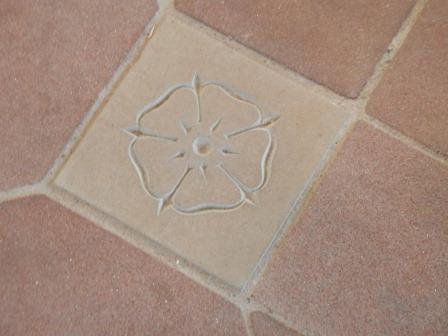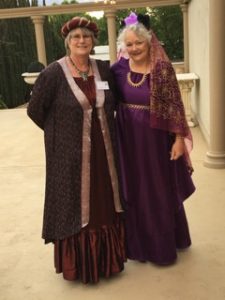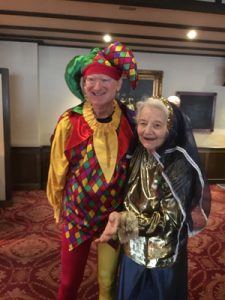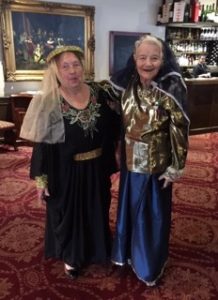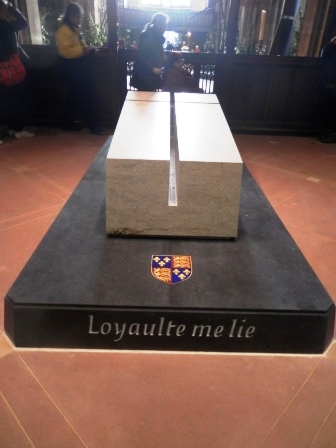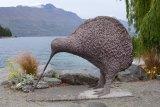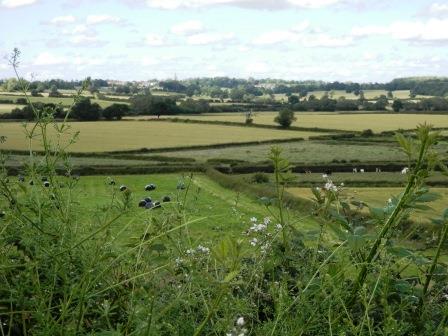
It doesn’t happen often that supporters of Richard III and those of Henry Tudor share the same view, but the latest battle of Bosworth, where Richard III lost his live and throne to Henry Tudor, achieved just that.
In the early evening (local time – thus in the middle of the night for us in Australia) of 25 September, Hinckley and Bosworth Borough Council’s planning committee had to decide whether to approve a planning application for a driverless vehicle testing track, which would intrude into part of Bosworth Battlefield.
The application had first been on the agenda a month ago, on 28 August, nearly exactly 533 years after the decisive battle. An automotive company, Horiba Mira, plans to build a “track [that] would include a 150 metre radius circle attached to a 350 metre long approach road”[i]. Part of the plan are also a two-storey control tower and communications masts. The company has a technology park on adjacent land at Higham on the Hill. At that meeting the decision was deferred for four weeks by 12 to 2.
The problem is that a part of this facility would be within the registered battlefield site. According to Horiba Mira the test track only affects only 0.5% of the battlefield. This may not sound like much, but as Mike Ingram[ii] points out, this is somewhat misleading.
There is the issue of this setting a precedent. If building on this battlefield is okay, it would follow that building on any other is equally okay. The same argument was made by others, among them Richard Mackinder, who had been closely involved with the research at Bosworth Battlefield. He said “is this the thin end of the wedge for Bosworth and other battlefields?”[iii]
The measure of 0.5% is misleading. The complete battlefield also includes outlying areas such as Sutton Cheney and Ambion Hill. These are important to the story of the battle, but not the actual area, where the fighting took place. However, the part which will be covered by the test track is potentially of much more importance. As Ingram points out: “the site of the development could yet prove to be a key part of the actual battlefield, but it might not only be taken from public access, the development would also destroy any hope of further research as well.” Indeed. cannonballs, a silver gilt boar badge probably worn by one of Richard III’s supporters and a leather bag were found nearby.[iv]
It is very disconcerting that Historic England – rather than opposing the plan – supported it. And this although its own guidelines say “registered battlefields are designated heritage assets of the highest significance. They, and their setting, should be protected and enhanced, and the granting of permission for developments causing substantial harm should be wholly exceptional.”[v]
Unsurprisingly, those supporting the construction of the test track argued that it would create jobs. This always seems to be the argument when debating any issue in the political sphere, when other – less measurable – interests speak against it, may it be historical significance like in this case, or for instance environmental concerns.
At the second meeting, only one person was allowed to speak against the development. That person was only given three minutes to make his/her case. From among various applicants, Richard Smith was selected. He is the Education Officer of the Richard III Society as well as the chairperson of the Leicestershire Branch. He did not just represent the Society though, but also other interested parties, from the Loyal Supporters of Richard III to the Battlefield Trust and even the Henry Tudor Society. This shows once again that when it comes to the preservation of Bosworth Battlefield the supporters of Richard III and Henry Tudor are united.
Richard Smith stressed that the site was extremely important historically. He also disagreed with Historic England’s assertion that ‘less than substantial’ harm will be caused. He reminded councillors that they are custodians of a rare asset and asked: “What will future generations think of the decision you make tonight if you are the officials who facilitate the vandalism of the site?”[vi] We would like to thank Richard for fighting for preserving this important site.
One of the councillors asked the obvious question whether MIRA couldn’t buy a couple of fields on the other side of the A5 and build the track there. Another councillor stated that 450 years of history where more important than short-term economic gain.
A petition against the proposed test track has got at the time of writing this post got 15,564 signatures, also from members of our branch here in NSW. In addition, more than 450 letters of objection had been sent to the council, again some of the by members of the NSW Branch.
Unfortunately, in the end it all did not help and the council voted with 12 votes to 5 for the test track. Horiba Mira plans to start building in December.
On a more positive note, the original plan included a new access road off Fenn Lane. According to the company its main entrance off the A5 did not have the capacity to accommodate the volume of big trucks. However, Leicestershire County Council objected to this plan because of potential damage to Fenn Lane and safety issues.
Notes:
[i] Martin, D., ‘What happened when councillors met to debate £26m MIRA track plan at Bosworth Battlefield’, Leicester Mercury (29 Aug. 2018). URL: https://www.leicestermercury.co.uk/news/leicester-news/live-councillors-meet-debate-26m-1945400 [last accessed 31 Aug. 2018]
[ii] Mike Ingram, ‘Bosworth planners quote misleading percentages & unenforceable promises says battlefield author’, The Pipeline (31 Aug. 2018). URL: http://thepipeline.info/blog/2018/08/31/bosworth-planners-quote-meaningless-percentages-unenforceable-promises-says-battlefield-author/ [last accessed 1 Sept. 2018]
[iii] Quoted in Martin, D., ‘Live: Councillors decide whether to permit £26m testing track on Richard III’s Bosworth Battlefield’, Leicester Mercury (25 Sept. 2018). URL: https://www.leicestermercury.co.uk/news/local-news/live-councillors-debate-whether-permit-2042715 [last accessed 26 Sept. 2018]
[iv] Neil Johnston, ‘My kingdom for a car? Bosworth track approved’, The Times (26 Sept. 2018). URL: https://www.thetimes.co.uk/article/my-kingdom-for-a-car-bosworth-track-approved-hx63sx3rw [last accessed 27 Sept. 2018]
[v] Quoted in Ingram
[vi] Quoted in Martin, ‘Live: Councillors decide whether to permit £26m testing track on Richard III’s Bosworth Battlefield’
Tags: Bosworth, Henry Tudor, Richard III, Richard III Society


